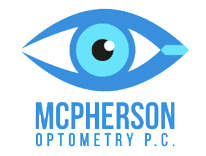5 Prescription Sunglass Options
If you wear prescription eyeglasses, you know that you also need a solution for sunglasses. The problem is that, even if you buy quality sunglasses, you may not be able to see clearly since they don’t have the prescription your eyes need to see well. The answer isprescription sunglasses in North Syracuse, NY. Your optometrist at McPherson Optometry offers prescription sunglasses with a variety of available options, including:
1. Polarized Lenses
Polarized lenses help to protect your eyes from the harmful effects of UV rays. They work to reduce glare, which makes them great for outdoor activities like skiing, driving, fishing and more. The polarization also helps sometimes with visual clarity. In turn, this can reduce the potential for eye strain, which is always good.
2. Mirrored Lenses
Mirrored lenses not only look cool. They also offer benefits like reducing the amount of incoming light. If you work, live, or play in very bright conditions, such as those on ski slopes, mirrored lenses are a solid choice.
3. Photochromatic Lenses
Photochromic, or transition lenses, are perfect for those who move frequently between indoor and outdoor environments. These lenses automatically adjust to the level of sunlight exposure: they darken in bright sunlight to protect your eyes and fade to clear indoors. Photochromic lenses offer a convenient, two-in-one solution that may negate the need for a separate pair of prescription glasses.
4. High Index Lenses
For those with strong prescriptions, high-index lenses make prescription sunglasses thinner and lighter. These lenses are made from advanced materials that bend light more efficiently than standard plastic or glass, reducing lens thickness and improving comfort. They are especially beneficial for people who find thick lenses uncomfortable or aesthetically unpleasing.
5. Bifocal and Progressive Lenses
Bifocal and progressive lenses are available in sunglass formats for persons needing multiple vision corrections. Bifocals provide clear vision at two different distances: close-up and far away. Progressive lenses offer a smooth, gradual transition between multiple prescription strengths for near, intermediate-, and distance vision without visible lines on the lenses.
Note that you don’t have to only pick one of the above options. Depending upon which you choose, you may be able to combine options, such as bifocals with mirrored lenses, etc. Or, consider investing in more than one pair of prescription sunglasses. Book an appointment with yourNorth Syracuse, NY, optometrist today to learn more.


